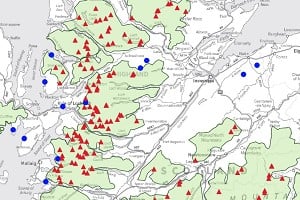
The idea of 're-wilding' damaged habitats is in vogue at the moment, and perhaps the most controversial such proposal is the reintroduction to Britain of big furry animals with teeth and a hunger for fresh meat. Just yesterday Scottish landowner Paul Lister was reported on the BBC re-stating his much-discussed plan to release wolves and bears on the Alladale estate in darkest Easter Ross.
'The vision is to have a minimum area of 50,000 acres, have a fence around it, and bring back wolves and bears into that area' he said. 'We'll assess the socio-economic impact that will have and also the environmental impact. The presence of these large predators really changes the landscape for the benefit of nature. We're talking about maybe two packs of 10 wolves, maybe a dozen bears. These animals create the environment. It's not humans who create the environment, it's nature.'
Some might call that a glorified private safari park rather than a sensible roadmap to a genuinely wild habitat, but nevertheless the success of species reintroductions across the world shows what can be done when conservation agencies take a hand and local people are willing to co-exist with big predators. So why not in Scotland? Regular UKH countributor John 'Grizzly' Burns hears the call of the wild...
Many years ago I was walking through a Canadian forest, heading for an ice climb, not too far from the town of Banff. I was alone, with my companion a few hundred yards behind me. There were a few inches of fresh snow on the ground and the forest was a silent place. I stepped into a clearing and suddenly realised I was no longer alone. A young mountain lion had entered the small sunlit area at the same moment as me. We both froze, uncertain of what was about to happen. The creature paused for a moment, looked at me, decided I was no threat and strolled casually away. The whole encounter only lasted a few seconds, yet it left a profound in impression on me.
Barry Lopez, in his wonderful book Arctic Dreams, talks about the awe he experiences in looking into the eyes of a wild animal in the wilderness. Lopez advocates bowing to the animal as a way of showing mutual respect. I didn’t have time to bow, to be afraid, to panic or to run. I just felt a sense of calm, as if such meetings were meant to be. It was as though the cat and I had met unexpectedly at a party and didn’t know what to say to each other. The lion should have heard me, perhaps she was zoned out at the time and thinking of prey to come. Either way I think we both felt slightly embarrassed, a climber isn’t supposed to almost fall over a number one predator. This was a young animal, nothing like fully grown and I suspect a similar encounter with a grizzly bear might have provoked different sentiments in me.
It is a pity that the Scottish Highlands are bereft of their top predators largely through man’s fear and ignorance. Now and again a few brave souls suggest returning the wolf to our shores only to be howled down by folk whose images of the creature were largely formed by Hammer Horror films. I read of one study that spoke about the effects of reintroducing the wolf in Yellowstone national park. The major effect of this, unsurprisingly, was to make the deer nervous. Not something, you might think, that would have a huge impact on the landscape. Strangely, however, that is exactly what it did. Nervous deer don’t spend so much time grazing in open areas and woodlands are able to regenerate providing a much more varied habitat for a range of creatures.
There is space for all of us in the Highlands and I for one, would be delighted to hear the howl of a distant wolf whilst urinating in the moonlight beside a bothy (that’s me urinating, not the wolf). There are far too many Red Deer in Scotland’s hills with the population ever increasing making the reforestation of the Highlands almost impossible with so many grazing animals. Admittedly you might get a few nervous hill walkers walking about if there was a possibility of bumping into a pack wild wolves as you stumbled late off the hill. A small price to pay for sharing such a wilderness.
Oddly I did speak to the Highland’s top predator this week. I contacted a ghillie on a Highland estate and asked about hill walking there in October during the stalking season. He couldn’t have been more helpful and encouraged me to come provided I kept to the better known routes. This just proves predators and hill walkers can share the mountains in Scotland, all it takes is a bit of mutual respect. Bring back the wolf, just don’t tell the deer.
For a serious look at bringing back the wolf check out the Wolves and Humans Foundation
This article is reproduced from John's blog on all things hill-related, where he's got an online poll on the wolf question. For more see here
More Articles



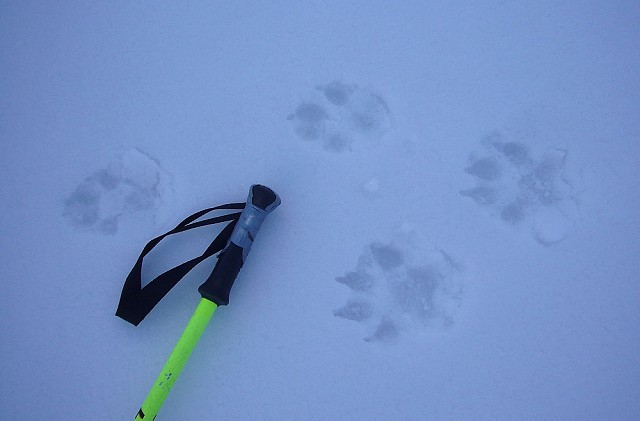

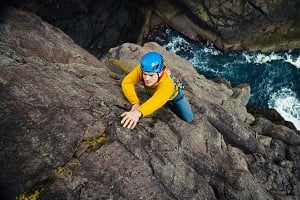
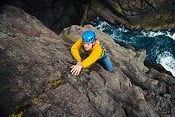
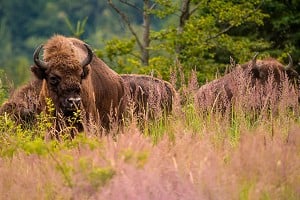





Comments